Notre-Dame de Pépiole chapel
Cultural and historical site
30 min
shade
Description
This pre-Romanesque chapel, with three adjacent naves oriented east-west and three apses surmounted by a bell tower and a belfry, probably represents the former priory of Sancta Maria de Sexti Furno (Six-Fours). The three primitive chapels, independent of each other in the 5th century, were merged into a single church in the 12th century by the placement of large side arches of blue stone that form the new nave.
Visiting hours
Every day from 3 to 6 p.m. with extension until 6.30 p.m. in summer.
The site is surrounded by a landscape made up of pines, cypresses, olive trees, vines and broom against a backdrop of the Toulon mountains. You should anyhow note the very noisy highway is 200 meters away.
No reproduction is permitted without the written consent of the author. (id6508)
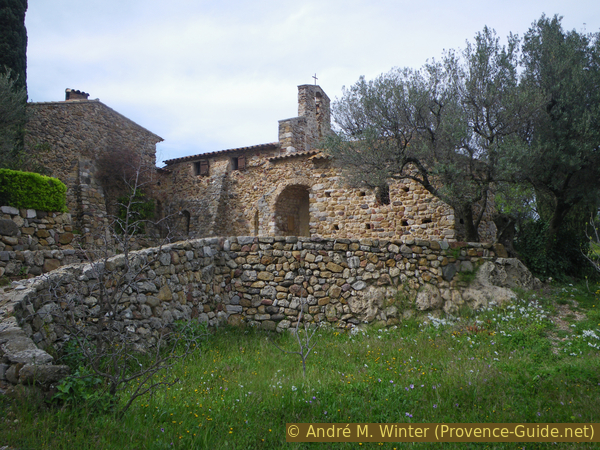
Notre-Dame de la Pépiole chapel in the olive trees
Site history
Excavations show that this monastic complex dates from the Carolingian period (5th century), but the founding date is unknown, it was enlarged and restored in the 11th century. It served successively as a military camp, a fortress, an oratory and a chapel. The most modern parts date from the 12th century (the portal, the double vault of the north nave and the two large arches in blue stone).
It is said to be the oldest chapel in Europe. Its architecture offers a curious analogy with the Syrian and Cypriot chapels of the time of Cassien, who came from the east around 414 to found the Saint-Victor monastery in Marseille. The chapel is built of local pink, yellow and gray stone.
No reproduction is permitted without the written consent of the author. (id6487)
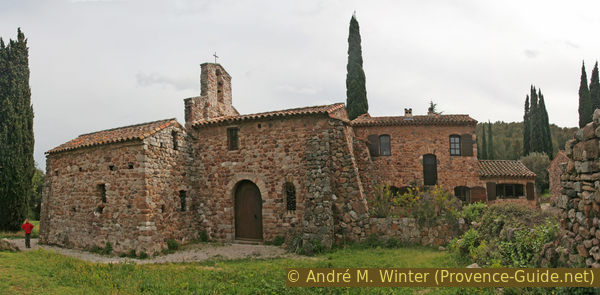
North nave of the Notre-Dame de la Pépiole chapel
Access by public transport
Arrival by public transport is easy, but the following footpath leads across country.
The most useful bus line is number 120 of Réseau Mistral. It runs from Toulon train station to Ollioules station. Get off at Bastide stop.
Continue walking in the direction of travel of the bus and turn right at the first opportunity and immediately right again. We are now on the Chemin de la Carraire. You come in front of two houses and now follow the path to the right of the left house. This path leads directly to a dark passage under the A50 motorway, followed by a passage under the railway. We cross a footbridge and turn right to go around the field. Before the tree-line, turn left and stay on the edge of the field.
After a hundred meters the field ends. We stay in a straight line south on the path that traverses a dirt road. We traverse the same way and go westwards between some olive trees. This way leads directly to the chapel.
Access by car
Take exit 13 towards La Seyne, Six-Fours and Ollioules from the A50 motorway between Toulon and Marseille. From Toulon, follow towards La Seyne at the large roundabout above the motorway, take the small third exit towards Camp Laurent. At the next crossing turn right Z.A. Les Playes.
- At the next roundabout turn left
- Another roundabout, here on the right
- Third roundabout on the left
- Next junction on the right in Rue de la Valette
- Continue here to arrive at Chemin de Pépiole
Coming from Marseille, take the same motorway exit and turn immediately right when you arrive at the roundabout above the motorway.
The Chemin de Pépiole leads through fields into a forest, where you find a parking lot for visitors of the chapel.
No reproduction is permitted without the written consent of the author. (id6486)
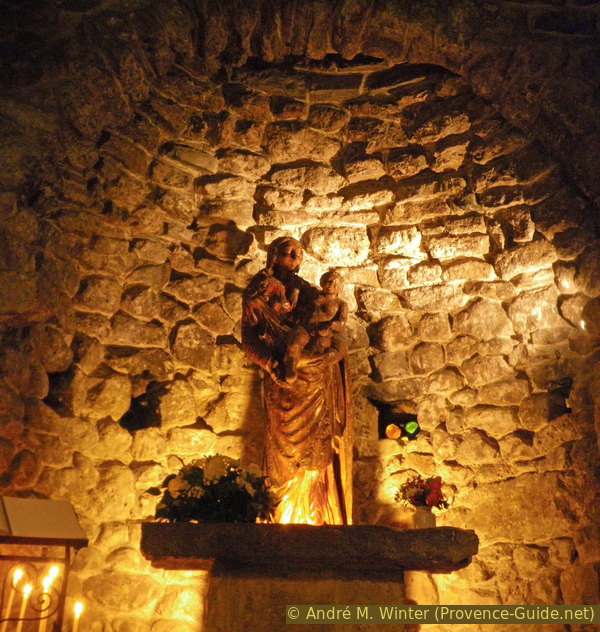
17th century statue of Notre-Dame de la Pépiole
No reproduction is permitted without the written consent of the author. (id6482)

Nave of the Notre-Dame de la Pépiole chapel
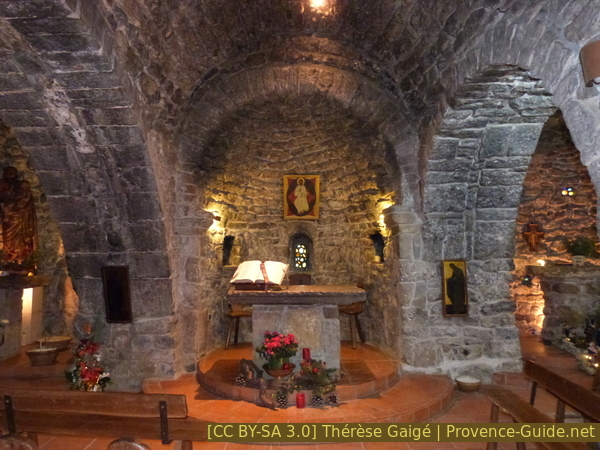
The altar of the Notre-Dame de Pépiole chapel
No reproduction is permitted without the written consent of the author. (id6485)
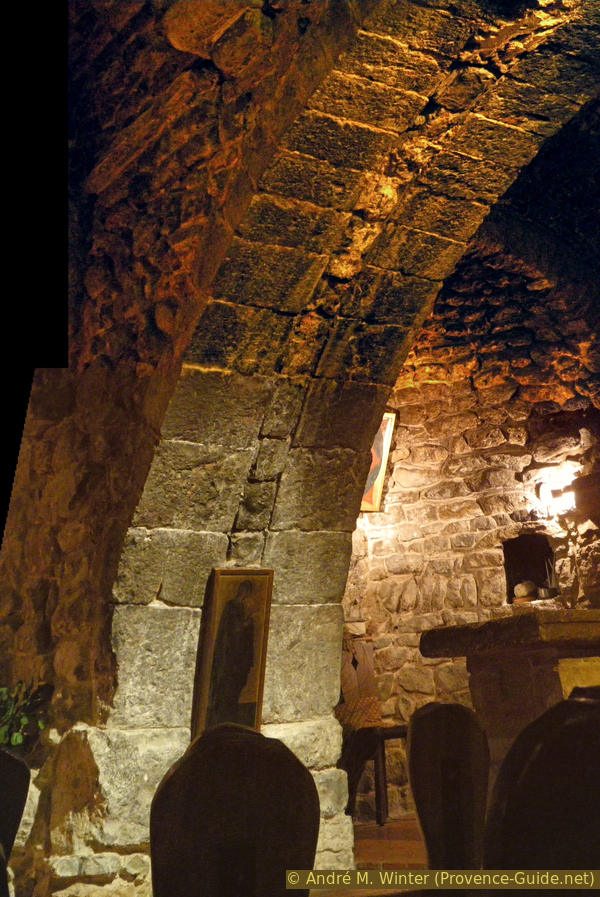
Large vault in the Notre-Dame de la Pépiole chapel
No reproduction is permitted without the written consent of the author. (id6488)
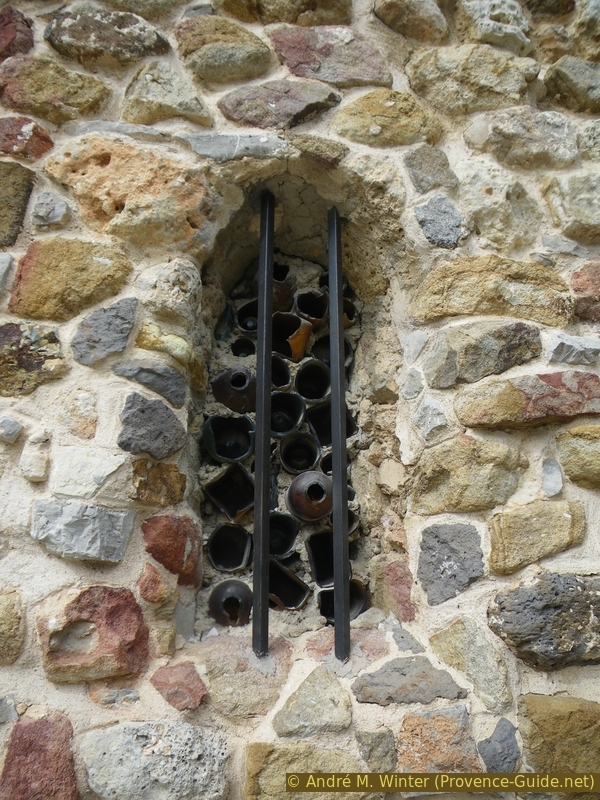
Window made of bottles in the Chapelle de Pépiole
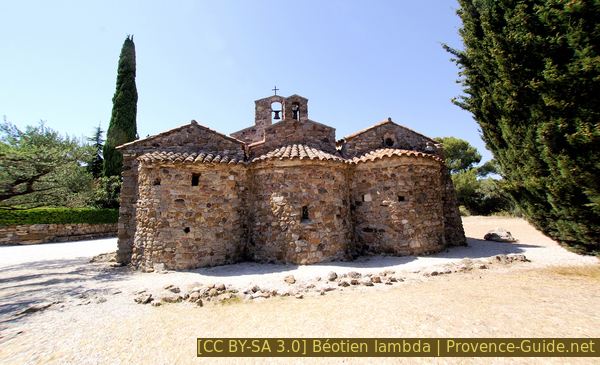
Apses of the Notre-Dame de la Pépiole chapel